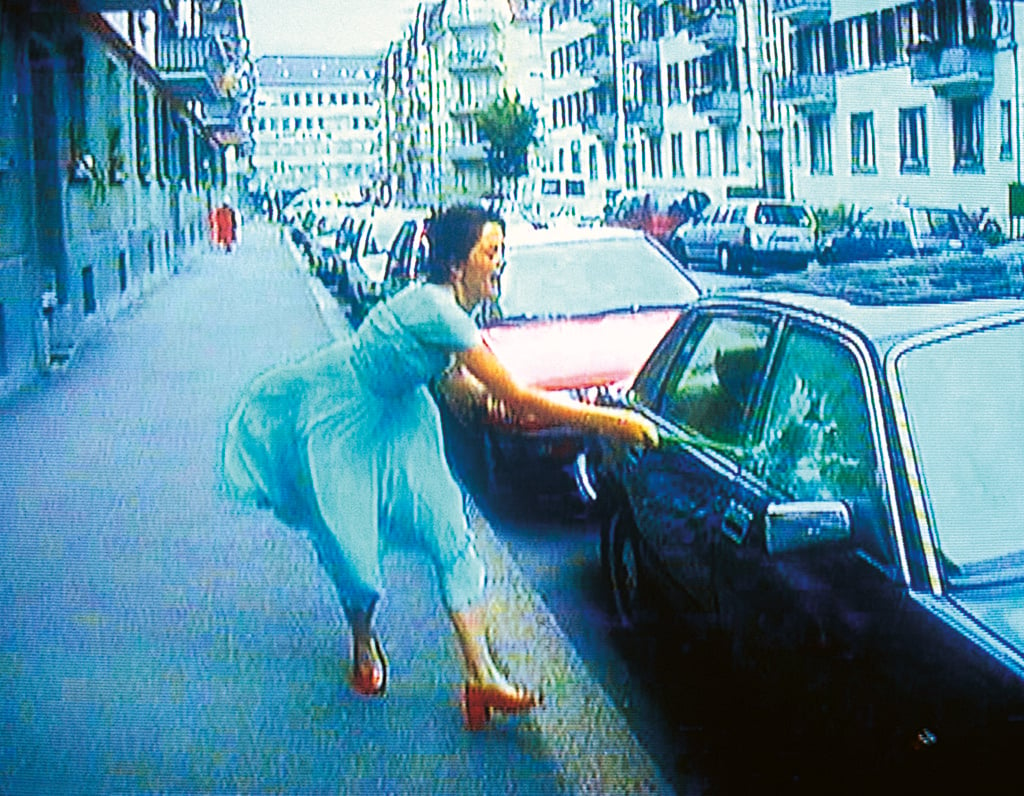Art History
Art We Love: The Jubilant Catharsis of Pipilotti Rist’s Rampage
On Pipilotti Rist’s 'Ever Is Over All' (1997).

On Pipilotti Rist’s 'Ever Is Over All' (1997).

Kate Brown

For an episode of the Art Angle podcast, we asked Artnet News writers and editors to tell us about one work of art that brings them joy. The following is a part of a series of transcripts of the answers. You can listen to the entire podcast on Apple Music, Spotify, or here.
Pipilotti Rist’s Ever Is Over All is a work from 1997 that was originally presented at the 47th Venice Biennale that year. It’s in the collection of the Museum of Modern Art, the Museum of Contemporary Art Chicago, and the National Museum of Modern Art in Kyoto, which all acquired copies.
This is a work that is full of formal beauty, and it is also full of surprises. It is incredibly sensuous. It also has a 1990s MTV aesthetic that makes it feel like a time capsule of sorts, but the subject matter and plot of the short video are unwaveringly timeless.
It’s a short looping video work that consists of two overlapping projections. On one side you see these psychedelic close-ups of tropical flowers in a field. On the other side, a woman walks down a nondescript European street with a large flower in her hand—the same kind of flower.
The first thing I find striking is the woman is dressed like Dorothy in the wizard of oz, with red shoes and a blue dress. She is totally girl-ified—she represents the “young female” in unequivocal terms. She smiles and strides with a real sense of confidence and pleasure. There is a sense of anticipation, built by the music which is eerie and enchanting. You’re entranced by her; you’re at her eye level; and you are wondering, “Where is she coming from or going?”
Then it begins: Her flower undergoes a metamorphosis before our eyes, and becomes a weapon. She starts smashing the windows of cars with the flower stalk and the glass breaking shoots through the room. She is swinging her stalk around in the air—and suddenly the stakes of the video have changed. A man walks by and looks, passersby go around her, somewhat unengaged.
A police officer is in the distance behind her. When the figure comes close enough, we realize it is a woman. The cop gives her a warm hello—and keeps on going. Meanwhile, the smashing windows punctuate the track right on the beat.
Our subject’s happiness teeters on hysteria. But we understand her because she stands in for the universal young girl, and she is having this cathartic moment. We don’t know why she is angry, but we can project all kinds of reasons (and there are so many, aren’t there?). The humming of the film is a sort of lullaby accompanying this scene of public vandalism and transgression. We are allies with her.
The film fades out into the very same flowers of the field.
This work is almost erotic, it transcends language and time, and it does not really need theory as a leg to stand on. The colors of it are extremely pronounced red, blue, and green. It’s just so oddly beautiful and its topic feels like it is permanently relevant.
I cannot recall when I first saw the piece, but it’s something that I never forgot once I saw it, because it’s just iconic in its poetic simplicity. I think what I love about it so much is the universal quality it has as well—that feeling of, “screw you, screw this.”
In an interview, Rist once talked about how she was given the carte blanche for a magazine shoot, magazine cover and all. She wanted to have a photo of an older woman on the cover, but the person who had invited her said no. What are you going to do with the anger that you feel?
That charged sentiment and then, sometimes, that act of rebellion, and after that, that feeling of triumph—feelings we all are familiar with in different ways—is the essence of this work. The flowers remind us that this feeling is natural, beautiful if anything. In that sense, Ever Is Over All manages to speak to feminism but also reaches well beyond it—its perfectly open-ended. It’s an unfinished sentence, and you can finish it however you need to.
More Trending Stories:
Art Dealers Christina and Emmanuel Di Donna on Their Special Holiday Rituals
Stefanie Heinze Paints Richly Ambiguous Worlds. Collectors Are Obsessed
Inspector Schachter Uncovers Allegations Regarding the Latest Art World Scandal—And It’s a Doozy
Archaeologists Call Foul on the Purported Discovery of a 27,000-Year-Old Pyramid
The Sprawling Legal Dispute Between Yves Bouvier and Dmitry Rybolovlev Is Finally Over